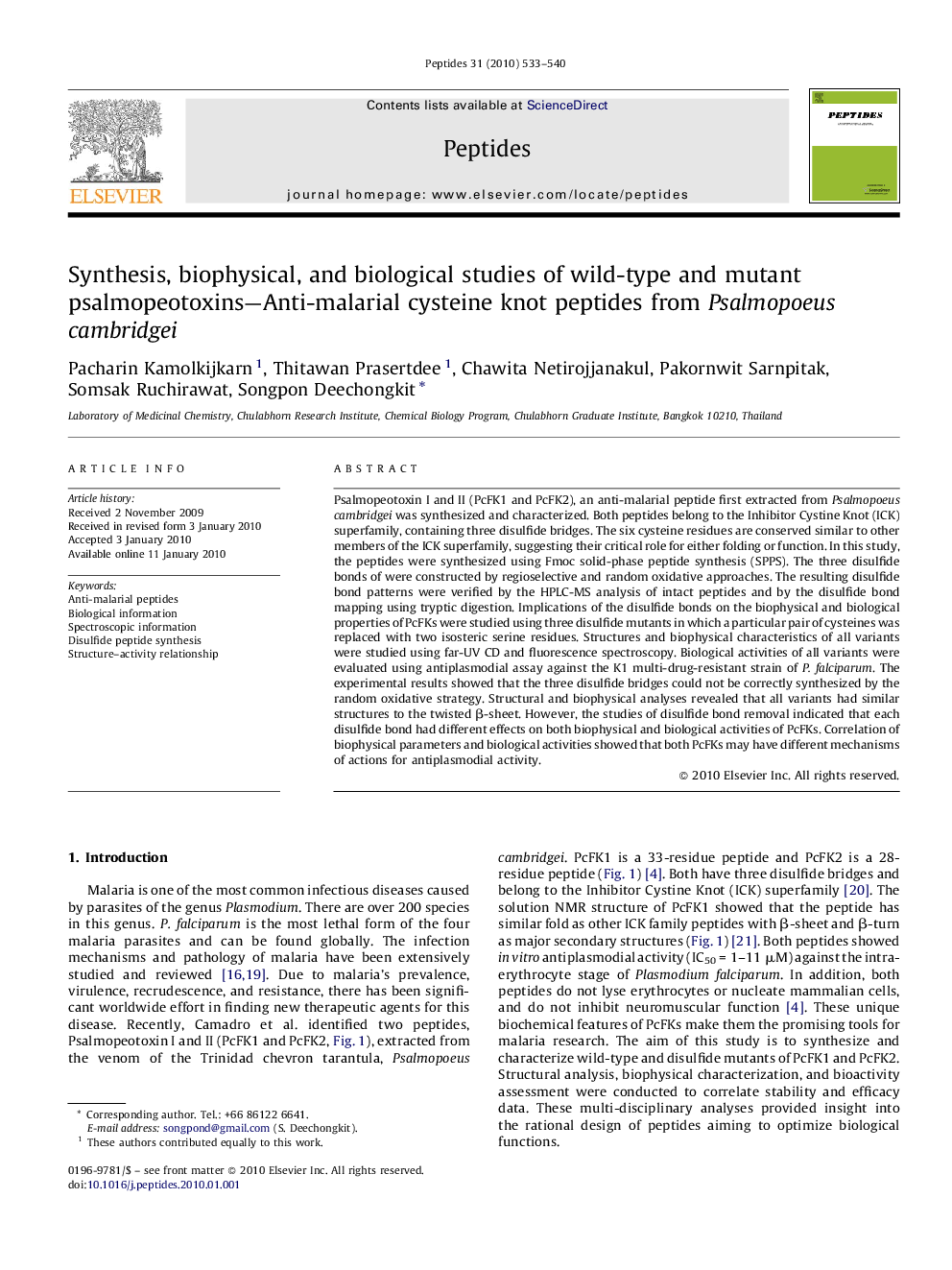| Article ID | Journal | Published Year | Pages | File Type |
|---|---|---|---|---|
| 2006874 | Peptides | 2010 | 8 Pages |
Psalmopeotoxin I and II (PcFK1 and PcFK2), an anti-malarial peptide first extracted from Psalmopoeus cambridgei was synthesized and characterized. Both peptides belong to the Inhibitor Cystine Knot (ICK) superfamily, containing three disulfide bridges. The six cysteine residues are conserved similar to other members of the ICK superfamily, suggesting their critical role for either folding or function. In this study, the peptides were synthesized using Fmoc solid-phase peptide synthesis (SPPS). The three disulfide bonds of were constructed by regioselective and random oxidative approaches. The resulting disulfide bond patterns were verified by the HPLC-MS analysis of intact peptides and by the disulfide bond mapping using tryptic digestion. Implications of the disulfide bonds on the biophysical and biological properties of PcFKs were studied using three disulfide mutants in which a particular pair of cysteines was replaced with two isosteric serine residues. Structures and biophysical characteristics of all variants were studied using far-UV CD and fluorescence spectroscopy. Biological activities of all variants were evaluated using antiplasmodial assay against the K1 multi-drug-resistant strain of P. falciparum. The experimental results showed that the three disulfide bridges could not be correctly synthesized by the random oxidative strategy. Structural and biophysical analyses revealed that all variants had similar structures to the twisted β-sheet. However, the studies of disulfide bond removal indicated that each disulfide bond had different effects on both biophysical and biological activities of PcFKs. Correlation of biophysical parameters and biological activities showed that both PcFKs may have different mechanisms of actions for antiplasmodial activity.
